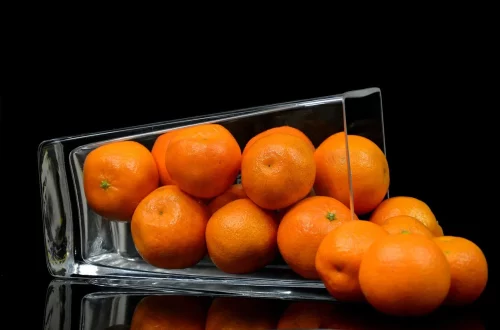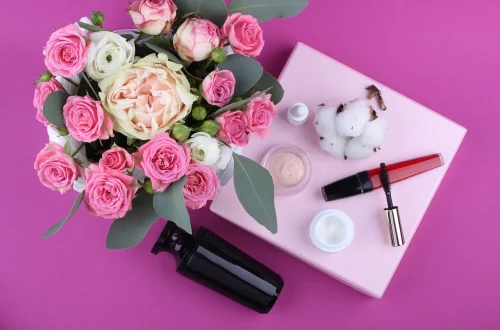
The Ultimate Guide to Hair Clipper Blades: Types and Maintenance Tips
Hair clippers are essential tools for both professional barbers and home grooming enthusiasts. Their versatility and efficiency have made them a staple in the world of hairstyling. However, the effectiveness of a hair clipper largely depends on the quality and condition of its blades. Over time, these blades can wear down, become dull, or even become damaged, which can significantly affect the performance of the clipper. Understanding the different types of hair clipper blades and how to maintain them is crucial for ensuring optimal performance and longevity of your grooming tools.
In the realm of hair clippers, blade selection can make all the difference in achieving the desired haircut. From different materials to varying designs, each type of blade offers unique advantages and disadvantages. Proper maintenance techniques are equally important, as they can help prevent issues such as rust, dullness, and uneven cutting. This guide will delve into the various types of hair clipper blades, their specific uses, and essential maintenance tips to keep your clippers in top shape. Whether you are a seasoned barber or a casual user, understanding these components will enhance your grooming experience and ensure that you achieve the best results with every cut.
Types of Hair Clipper Blades
When it comes to hair clipper blades, there are several types, each designed for specific tasks and hair types. Understanding these can help you choose the right blade for your needs.
**Stainless Steel Blades**: These are among the most common types of blades found in hair clippers. Stainless steel is durable, resistant to rust, and easy to maintain. This makes stainless steel blades a popular choice for both professionals and home users. They provide a clean cut and can maintain sharpness over a longer period. However, they may require regular cleaning and oiling to ensure optimal performance.
**Carbon Steel Blades**: Carbon steel blades are known for their sharpness and ability to hold an edge longer than stainless steel. They are often preferred by barbers who need precision and efficiency in their work. However, carbon steel is more susceptible to rust, which means they require more diligent maintenance. Regular cleaning and oiling are essential to prevent rust buildup and prolong the life of these blades.
**Ceramic Blades**: Ceramic blades are gaining popularity due to their ability to stay cooler during use, which can be beneficial for prolonged hair cutting sessions. They are also less prone to dulling compared to steel blades. However, ceramic blades can be more fragile and may chip or break if dropped. They are ideal for users who value longevity and maintain sharpness but may not be suitable for all types of hair cutting.
**Adjustable Blades**: These blades offer versatility, allowing users to change the length of the cut without switching blades. This feature is especially helpful for barbers who require different lengths for various styles. Adjustable blades are often either stainless or carbon steel and provide a convenient solution for quick transitions between cuts.
**Detachable Blades**: Detachable blades are designed for ease of use, allowing quick changes and cleaning. These blades typically come in a variety of sizes, making them versatile for different cutting styles. They can be found in both stainless and carbon steel options, catering to various user preferences. These blades are popular among professionals due to their convenience and efficiency.
Choosing the right blade type is crucial for achieving the desired haircut. Understanding the strengths and weaknesses of each can help you make an informed decision tailored to your grooming needs.
How to Maintain Hair Clipper Blades
Proper maintenance of hair clipper blades is essential for ensuring their longevity and performance. Neglecting to care for your blades can lead to dullness, rust, and poor cutting performance. Here are some essential tips for maintaining your hair clipper blades.
**Regular Cleaning**: After each use, it is crucial to clean your blades to remove hair clippings, product buildup, and dirt. Use a soft brush to gently remove debris from the blades. You can also use a small amount of clipper cleaning solution or alcohol to disinfect and clean them thoroughly. Avoid submerging the blades in water, as this can lead to rust and damage.
**Oiling the Blades**: Oiling is a vital step in maintaining the sharpness and functionality of your blades. Use a few drops of clipper oil and apply it to the blade’s teeth. This lubrication reduces friction during use and helps prevent overheating. Oil your blades after every few cuts or as recommended by the manufacturer.
**Adjusting Blade Tension**: Keeping the right tension on your clipper blades is essential for optimal cutting performance. If the blades are too tight, they may not move freely, leading to poor cutting. Conversely, if they are too loose, they may not cut effectively. To adjust the tension, consult your clipper’s manual for specific instructions.
**Periodic Sharpening**: Even the best blades will eventually dull over time. Depending on usage, you may need to sharpen your blades periodically. You can do this by using a specialized sharpening stone or sending them to a professional sharpening service. Regular sharpening ensures that your clippers perform at their best and provides clean, precise cuts.
**Inspecting for Damage**: Regularly inspect your blades for signs of wear and tear, such as chips, cracks, or rust. If you notice any damage, it is crucial to replace the blades immediately to avoid potential injury or ineffective cutting. Keeping a close eye on your blades will help you catch issues early and maintain the best performance.
By following these maintenance tips, you can extend the life of your hair clipper blades and ensure they provide the best performance possible. Consistent care will not only improve the quality of your cuts but also save you money in the long run.
Choosing the Right Blade for Your Hair Type
Selecting the appropriate hair clipper blade is essential for achieving the best results, especially considering the variety of hair types and styles. Different hair textures and lengths require different approaches, and understanding these can enhance your grooming experience.
**Fine Hair**: If you have fine hair, consider using a blade that provides a closer cut. Stainless steel blades are often ideal for fine hair, as they can create precision cuts without pulling or snagging. Additionally, using a blade with a finer tooth can help prevent split ends and ensure a smooth finish.
**Thick Hair**: For individuals with thick hair, it’s crucial to choose blades that can handle the density without becoming dull quickly. Carbon steel blades are often preferred for thicker hair, as they maintain sharpness longer and can cut through hair more efficiently. An adjustable blade may also be beneficial, as it allows for different cutting lengths, accommodating various styles.
**Curly Hair**: Curly hair can be challenging to cut, and using the right blade is crucial to avoid unevenness. A blade that provides a bit of length, such as an adjustable blade, can help maintain the curls while still providing a clean cut. Additionally, a ceramic blade can reduce heat buildup, which is beneficial when cutting curly hair.
**Coarse Hair**: Coarse hair often requires a robust blade that can withstand the thickness. Stainless steel or detachable blades are great options for coarse hair, as they can provide the necessary strength and sharpness for effective cutting. It’s essential to ensure that the blades are regularly sharpened to maintain their cutting ability.
**Children’s Hair**: When cutting children’s hair, consider using blades that are designed for gentleness. Blades with rounded tips can help prevent accidental cuts and provide a smoother experience. Additionally, using a blade that can adjust to different lengths can be helpful for achieving varying styles as the child grows.
Ultimately, the best blade for your hair type will depend on personal preference and specific needs. Experimenting with different types can help you determine which works best for your individual style and hair texture.
In conclusion, understanding hair clipper blades and their maintenance is essential for anyone looking to achieve stylish and precise haircuts. Regular care and appropriate selection can significantly enhance the performance and life of your grooming tools.
*Please note that this article is for informational purposes only and should not be considered medical advice. For any health-related concerns, please consult with a healthcare professional.*




